Virtual Reality Based Learning Platform Financial Model
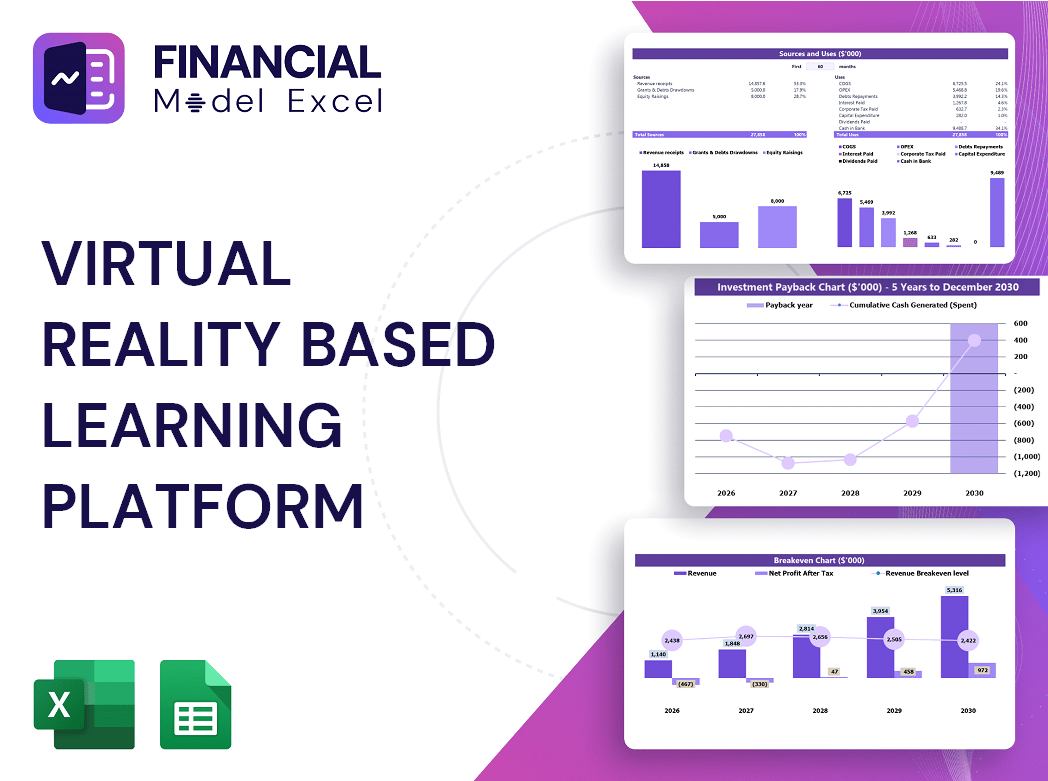
5-Year Financial Projections
100% Editable
Investor-Approved Valuation Models
MAC/PC Compatible, Fully Unlocked
No Accounting Knowledge Needed
Virtual Reality Based Learning Platform Financial Model
Bundle Includes:
-
Financial Model
-
Business Plan
-
Pitch Deck
-
Financial Dashboard
ALL IN ONE MEGA PACK - CONSIST OF:
Virtual Reality Based Learning Platform Financial Model/Business Plan Excel Template
Pitch Deck Template For PowerPoint, Keynote & Google Slides
Business Plan Guide and Business Plan Template in MS Word Format
Financial Dashboard in Excel To Track Your Business Performance
VIRTUAL REALITY BASED LEARNING PLATFORM FINANCIAL MODEL FOR STARTUP INFO
Highlights
The virtual reality education startup financial forecast template offers a comprehensive 5-year financial planning solution designed specifically for companies in the VR learning platform revenue model sector. Ideal for both emerging startups and established small businesses, this financial model facilitates detailed financial planning for VR learning solutions, including budgeting VR-based training programs and analyzing the cost structure of virtual reality learning systems. By leveraging this financial forecasting tool, businesses can evaluate the financial feasibility of virtual reality education, optimize revenue streams for VR learning platforms, and develop robust investment models for virtual reality education to ensure sustainable growth and profitability.
This ready-made virtual reality education financial model Excel template effectively addresses common challenges faced by VR learning platform entrepreneurs by providing a comprehensive, automated solution for financial planning and analysis. It simplifies the complex task of budgeting VR-based training programs and financial projections for virtual reality training by integrating a three-statement financial model—incorporating the balance sheet, pro forma income statement, and cash flow model—into one cohesive framework. By including crucial financial metrics such as break-even revenue calculators, valuation charts, and NPV with free cash flow projections, it enables precise financial feasibility assessments and investment appraisals. The dynamic interconnectivity of variables within the model ensures that users can quickly understand the impact of changes on VR educational software monetization strategies, revenue streams for VR learning platforms, and overall profit models without manual recalculations. This tool remarkably streamlines financial planning for VR learning solutions, offering a scalable and user-friendly approach to managing cost structures, cash flow, and forecasting, thus greatly relieving the pain points associated with traditional, fragmented financial modeling methods in immersive learning startups.
Description
Our virtual reality education startup financial forecast utilizes a comprehensive three-statement vr learning platform revenue model designed for detailed financial planning and analysis, incorporating dynamic assumptions around revenue streams, cost structure of virtual reality learning systems, initial investment, and operational expenses. This financial model for virtual reality training platforms facilitates accurate financial projections for virtual reality training by integrating budgeting vr based training programs, investment model for virtual reality education, and sensitivity analyses that auto-adjust based on key performance drivers such as daily active users or subscription volumes. Additionally, the model provides in-depth vr educational software monetization strategy insights, cash flow modeling, debt service scheduling, and valuation metrics, ensuring robust financial feasibility evaluation and effective financial strategy development for immersive learning solutions.
VIRTUAL REALITY BASED LEARNING PLATFORM FINANCIAL MODEL FINANCIAL MODEL REPORTS
All in One Place
Our comprehensive VR education financial model features modular profit and loss projections, encompassing three key financial statements, operating costs, hiring plans, equity cap tables, and pre-seed valuation. Designed for virtual reality training platforms, it includes dynamic growth forecasts, revenue streams, and financial projections for immersive learning solutions. Fully customizable with open cells and formulas, this VR learning platform profit model allows seamless adjustments to suit your unique business needs. Expandable for detailed financial planning, budgeting, and VR-based e-learning financial analysis, it serves as a robust foundation for investment models and financial feasibility assessments in virtual reality education startups.
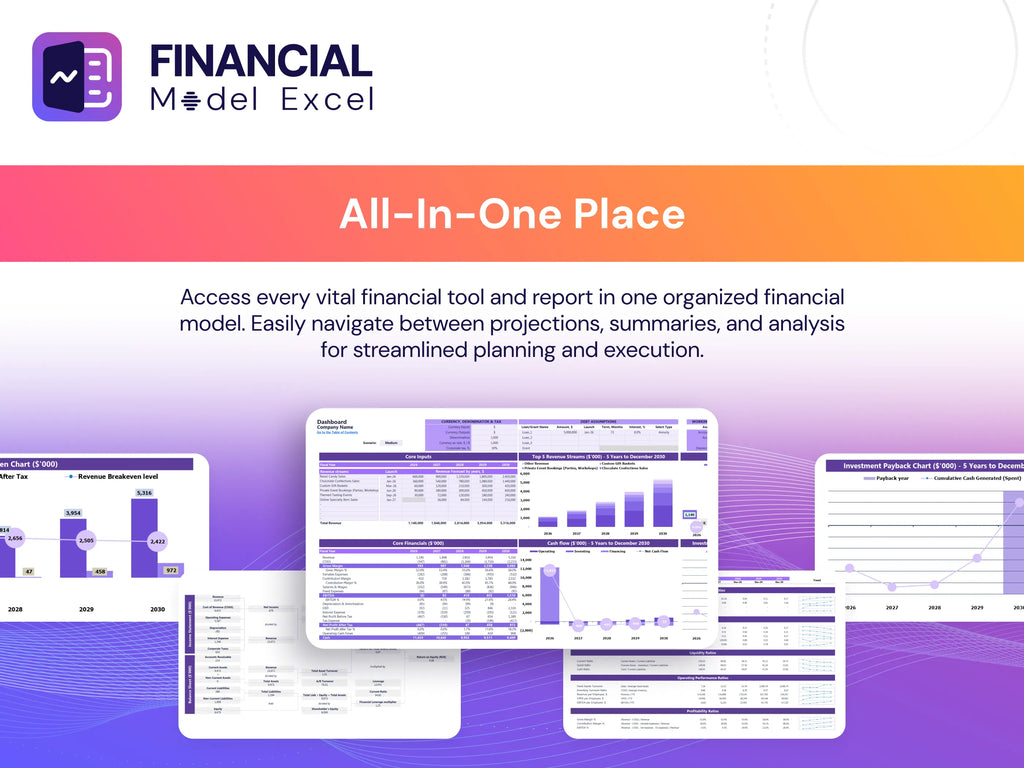
Dashboard
The Dashboard tab showcases your virtual reality education startup financial forecast through dynamic graphs, ratios, and charts. This comprehensive vr learning platform profit model provides clear financial projections for virtual reality training, enabling in-depth analysis of revenue streams and cost structures. Designed for seamless financial planning and budgeting of VR-based training programs, it empowers you to optimize your investment model for virtual reality education while monitoring key financial metrics. Unlock strategic insights to drive your VR educational software monetization strategy and ensure the financial feasibility of your immersive learning solutions.
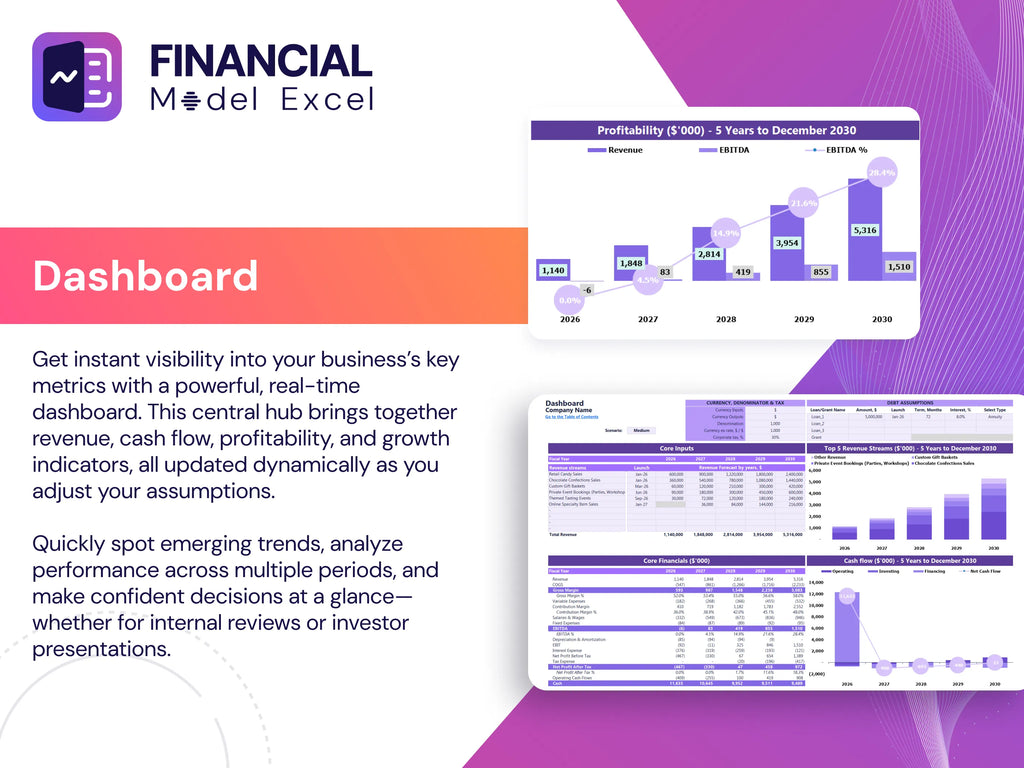
Business Financial Statements
The financial modeling for immersive learning solutions breaks down into three key statements: the Income Statement, detailing revenues and expenses—including non-cash items like depreciation and taxes; the Balance Sheet, presenting assets, liabilities, and equity at a specific date, adhering to assets = liabilities + equity; and the Cash Flow Statement, categorizing cash inflows and outflows across operating, investing, and financing activities. These components form the foundation for effective financial planning and analysis within virtual reality education startups and VR learning platform profit models.
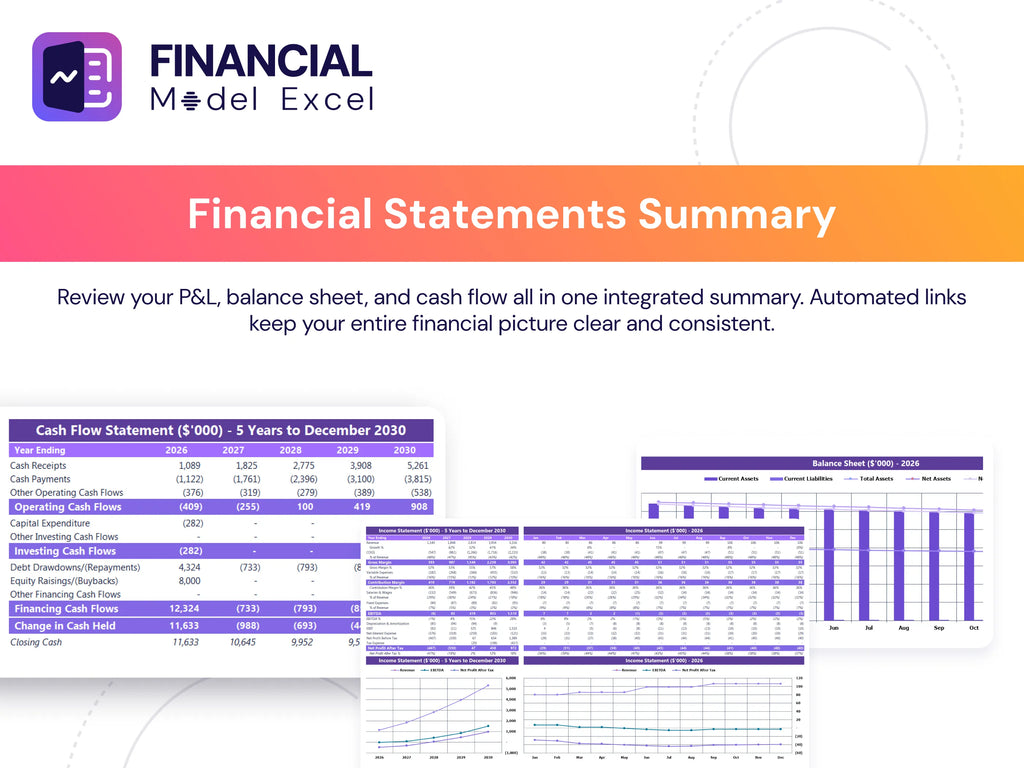
Sources And Uses Statement
A detailed sources and uses table is essential for transparent financial planning in virtual reality education startups. It systematically tracks all revenue streams and funding sources while clearly outlining the allocation of funds across VR learning platform development, marketing, and operational costs. Incorporating this into your VR educational software monetization strategy enhances the accuracy of financial projections and supports effective budgeting for VR-based training programs. This approach ensures a robust financial model, enabling informed decision-making and maximizing profitability within immersive learning solutions.
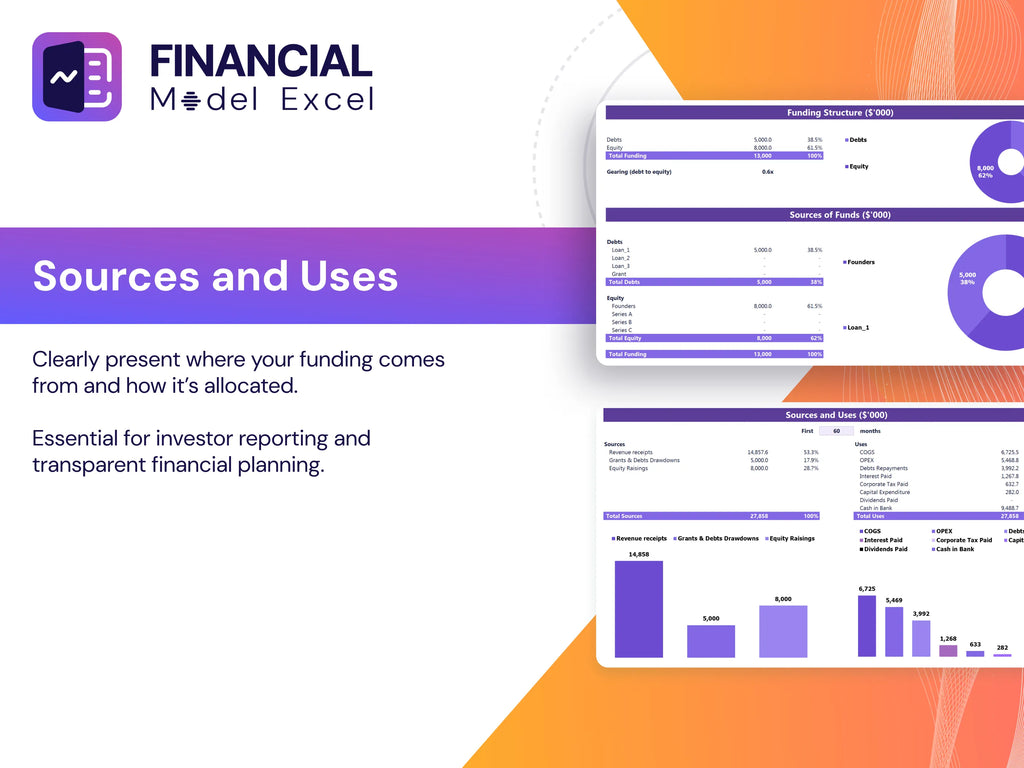
Break Even Point In Sales Dollars
Our comprehensive financial modeling template for virtual reality education startups includes an integrated break-even analysis, empowering management to pinpoint the timeline to profitability. This VR learning platform financial plan automatically generates key metrics such as break-even timing, break-even units, and cost-volume-profit (CVP) graphs. Utilizing this model enhances financial planning for VR learning solutions, ensuring data-driven decisions in budgeting VR-based training programs and optimizing revenue streams for VR educational software monetization strategies.
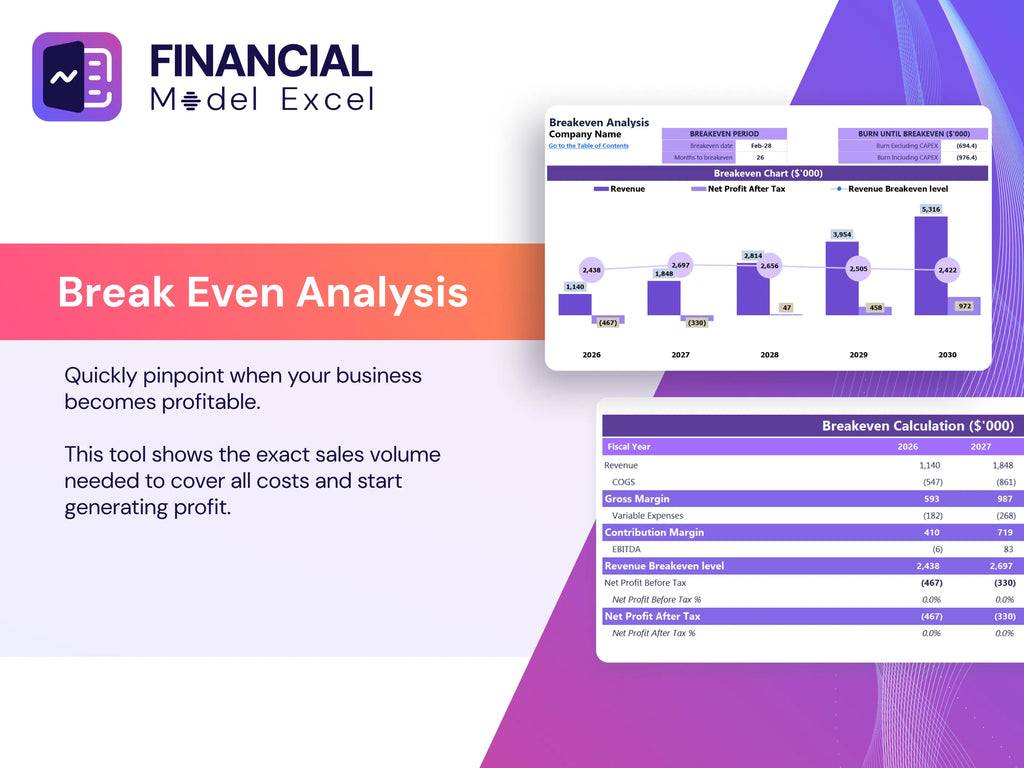
Top Revenue
This financial forecast template features a comprehensive revenue tab designed for in-depth analysis of your virtual reality education startup’s income streams. Utilize this tool to break down revenue by product or service category, facilitating precise financial projections for virtual reality training. Ideal for crafting a robust VR learning platform revenue model, this template supports strategic financial planning and budgeting of VR-based training programs, enhancing your investment model and monetization strategy. Gain clear insights into your VR educational software’s cost structure and profit potential, empowering informed decisions for sustainable growth in immersive learning solutions.
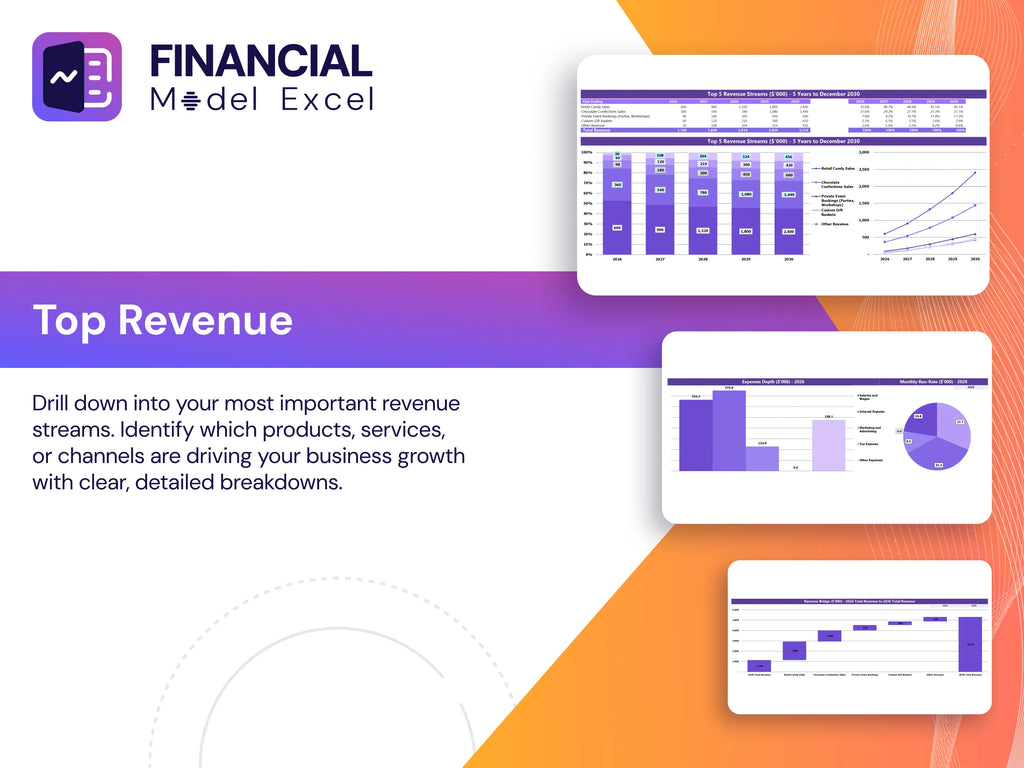
Business Top Expenses Spreadsheet
The "Top Expenses" tab in this VR education financial model clearly categorizes the company’s yearly expenditures across four key areas. This VR learning platform profit model offers detailed insights into fund allocation—whether targeting customer acquisition, employee compensation, or operational costs. By breaking down the cost structure of virtual reality learning systems, it empowers effective financial planning for VR learning solutions and supports informed budgeting of VR-based training programs. This comprehensive financial analysis enhances the financial feasibility and strategic management of immersive education ventures.
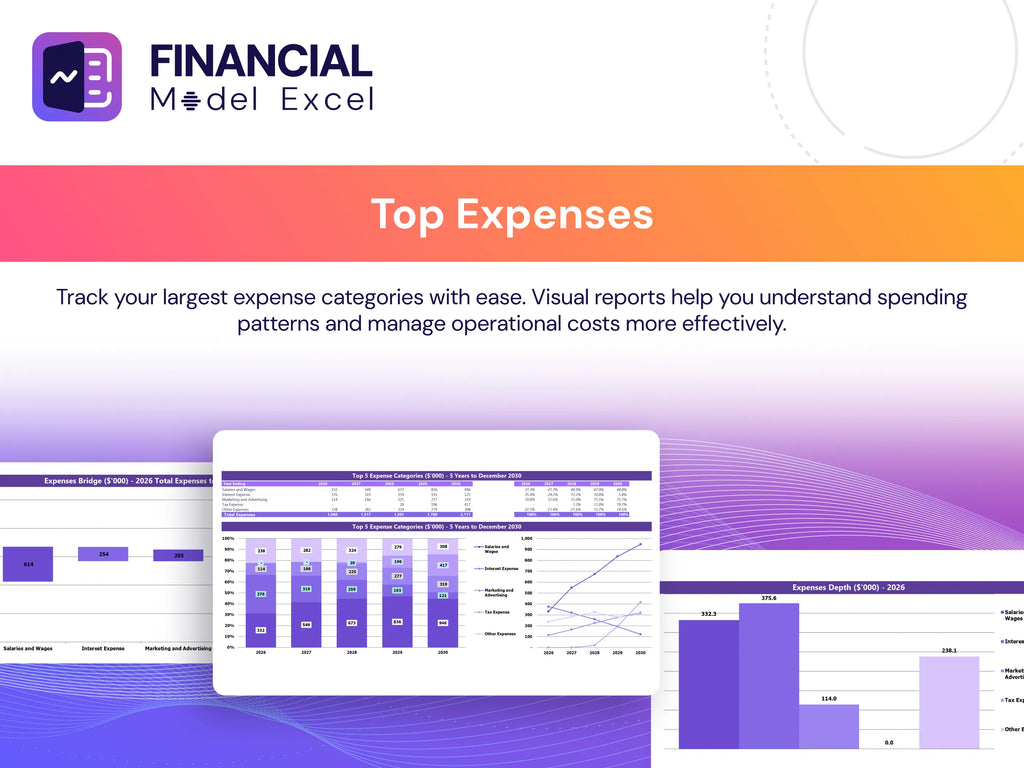
VIRTUAL REALITY BASED LEARNING PLATFORM FINANCIAL MODEL FINANCIAL PROJECTION EXPENSES
Costs
The VR learning platform financial model is an essential tool for accurately projecting costs and revenues, ensuring informed financial planning for immersive education solutions. This comprehensive budgeting template highlights key expense areas and identifies opportunities for cost optimization. By integrating detailed financial projections and cash flow models, it strengthens the virtual reality education startup’s business plan, enhancing credibility for investor pitches and loan applications. Leveraging this financial analysis enables strategic decision-making, supporting sustainable growth and profitability within the competitive VR-based e-learning market.
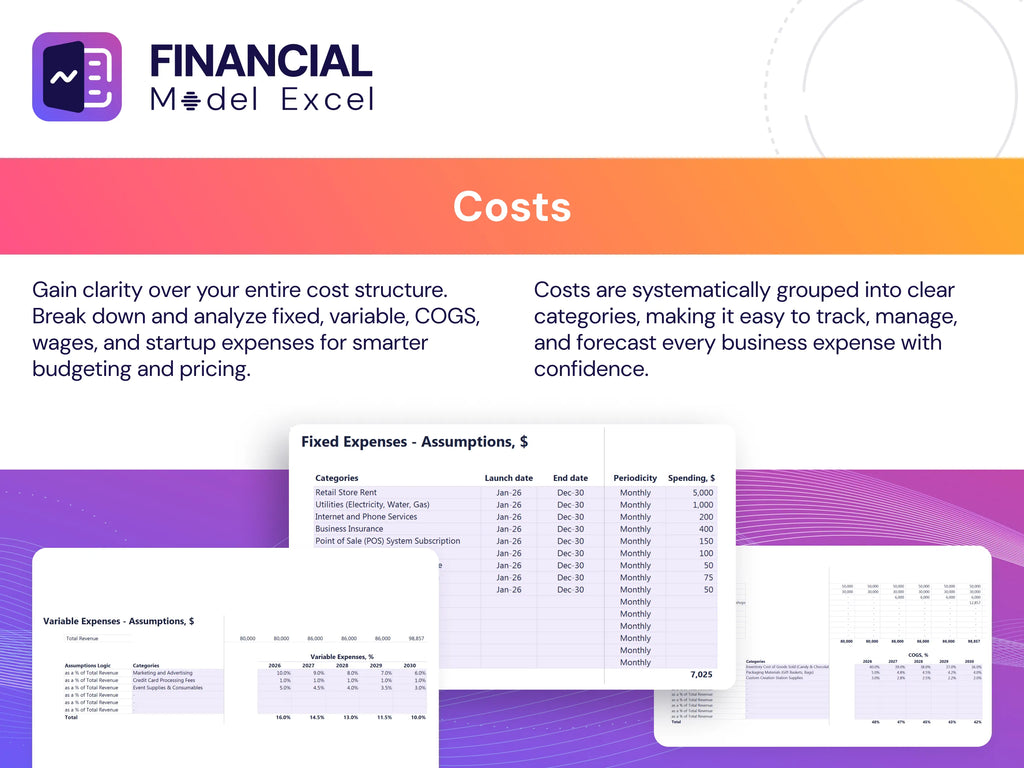
CAPEX Spending
This comprehensive financial model for virtual reality education features integrated CapEx calculations with pre-built formulas, enabling precise budgeting of capital expenditures. Seamlessly linked with profit and loss forecasts and pro forma balance sheets, it delivers a robust vr learning platform revenue model and financial projections for virtual reality training. Ideal for startups and established ventures, this tool supports strategic financial planning, investment analysis, and cash flow modeling, ensuring a thorough vr education business financial plan and cost structure assessment. Empower your vr based e-learning financial analysis and maximize revenue streams with this essential virtual reality training platform budgeting solution.
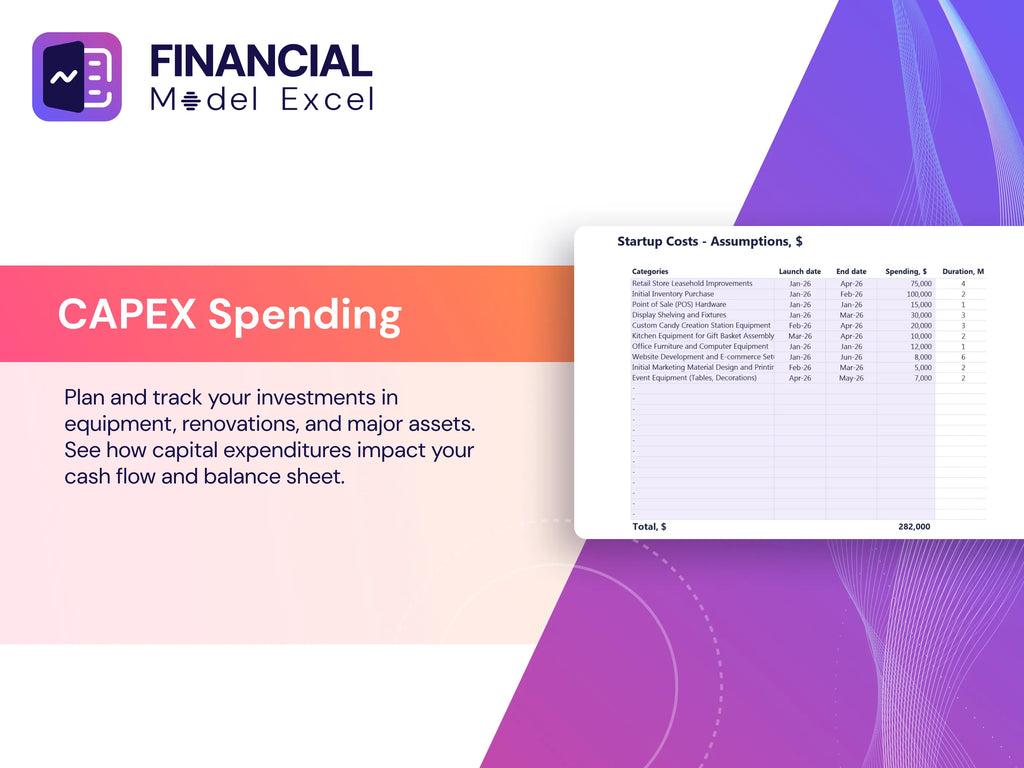
Loan Financing Calculator
In virtual reality education startups, effective financial planning hinges on a detailed loan amortization schedule. Similar to the amortization of assets in financial projections for virtual reality training, loan amortization evenly distributes repayments over multiple reporting periods. This structured approach typically involves fixed monthly payments, though quarterly or annual options may apply. Incorporating this into your vr learning platform cash flow model enhances budget accuracy and supports sound financial strategy, ensuring the sustainable growth of your VR educational software monetization efforts.
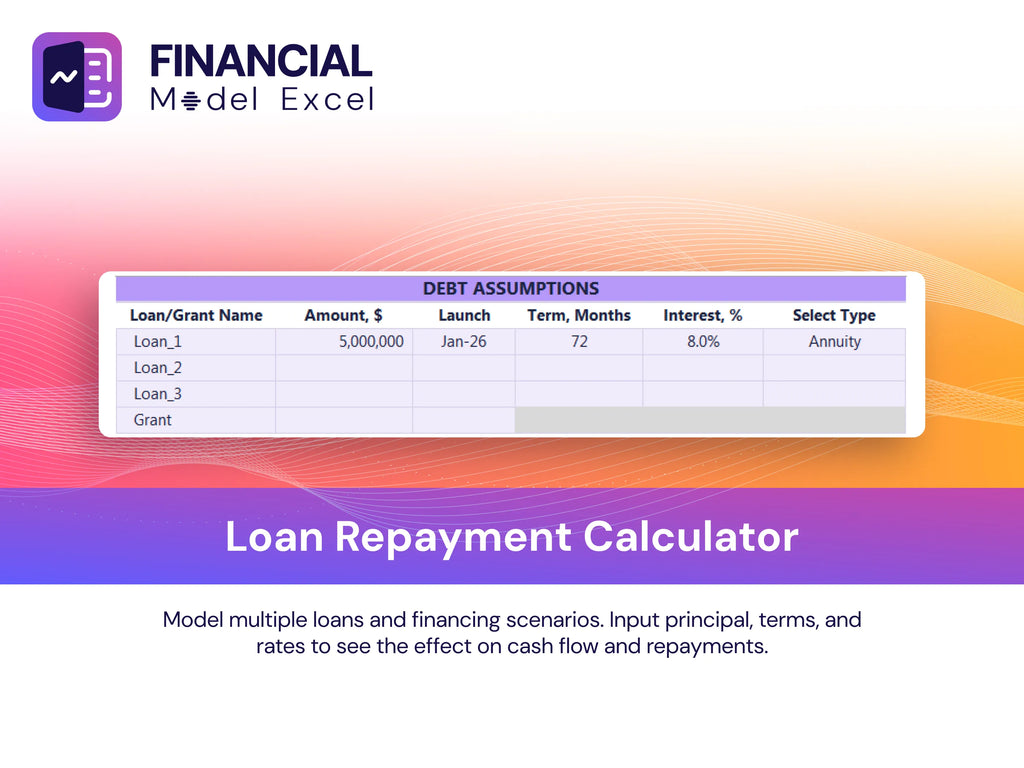
VIRTUAL REALITY BASED LEARNING PLATFORM FINANCIAL MODEL EXCEL FINANCIAL MODEL METRICS
Financial KPIs
Month-over-month sales growth is a key metric in the financial planning for VR learning solutions, reflecting revenue trends amid seasonal and economic shifts. In virtual reality education startups, tracking sales growth within the financial projections for virtual reality training provides valuable insight into revenue streams and platform profitability. Monitoring this metric daily, weekly, or monthly allows leadership to assess the effectiveness of the VR educational software monetization strategy and adjust budgeting for VR-based training programs. For companies with multiple sales teams, analyzing sales growth separately supports targeted financial modeling for immersive learning solutions and drives strategic decision-making.
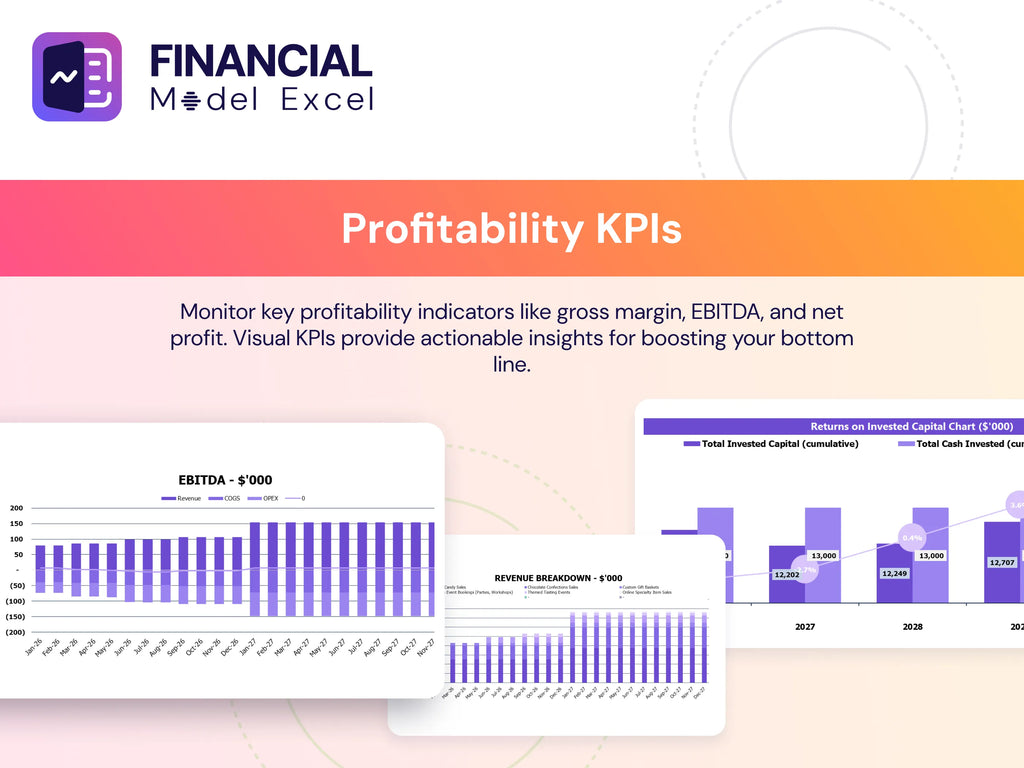
Cash Flow Forecast Excel
The cash flow model is essential for demonstrating your virtual reality education startup’s capacity to meet operating expenses and liabilities. Accurate financial planning for VR learning solutions ensures a solid foundation for budgeting VR-based training programs and projecting revenue streams for VR learning platforms. Moreover, banks and investors rely on detailed cash flow projections and financial forecasts to evaluate the financial feasibility and repayment ability of your VR education business. Integrating a comprehensive cash flow analysis within your financial model strengthens your VR training platform’s investment appeal and long-term profitability.
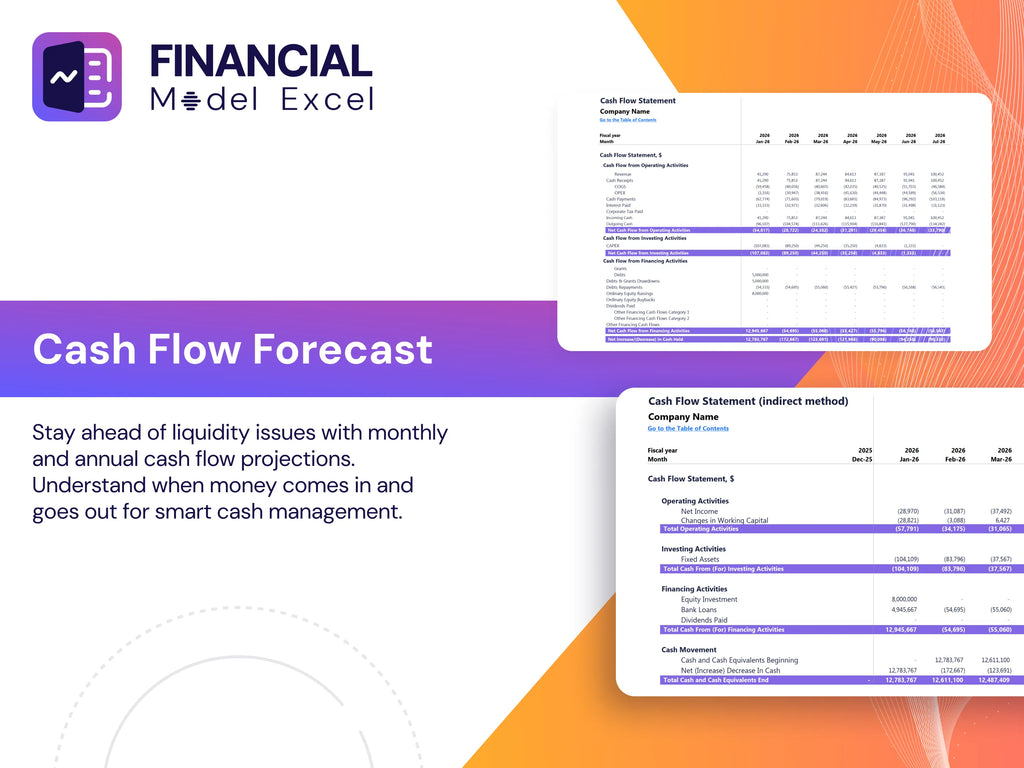
KPI Benchmarks
The startup costs template benchmark tab evaluates key financial and business metrics, comparing them with industry-wide averages to perform precise financial analysis for virtual reality education ventures. This benchmarking is vital in financial modeling and planning for VR learning platforms, enabling startups to assess their financial feasibility and refine their investment model for virtual reality education. By studying established companies’ revenue streams, cost structures, and profit models, startups can adopt best practices, optimize budgeting for VR-based training programs, and strengthen their financial projections for immersive learning solutions—ultimately driving strategic growth and sustainable profitability.
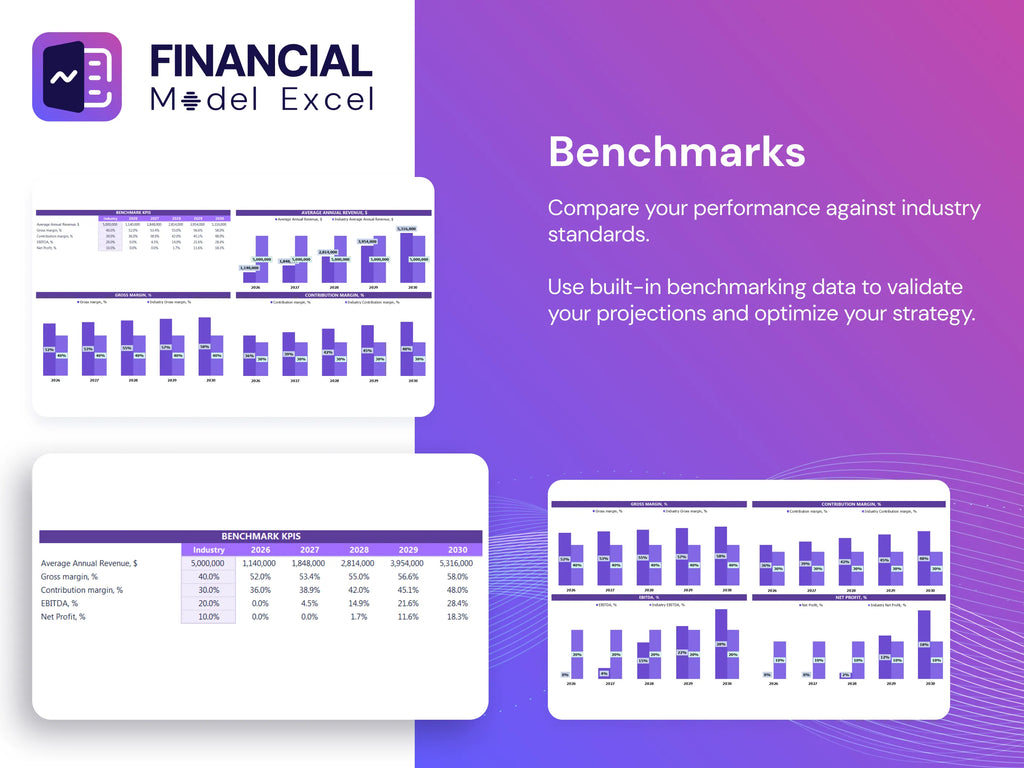
P&L Statement Excel
This comprehensive financial model for virtual reality education is designed for both industry professionals and beginners. Featuring detailed P&L statement projections, it offers clear insights into income and expenses essential for crafting a robust financial strategy. Ideal for VR learning platforms, this tool supports financial planning, budgeting, and revenue modeling, empowering stakeholders to analyze cost structures and forecast profitability with confidence. Whether developing immersive training solutions or e-learning systems, this model enhances financial feasibility assessment and strategic investment decisions in the VR education space.
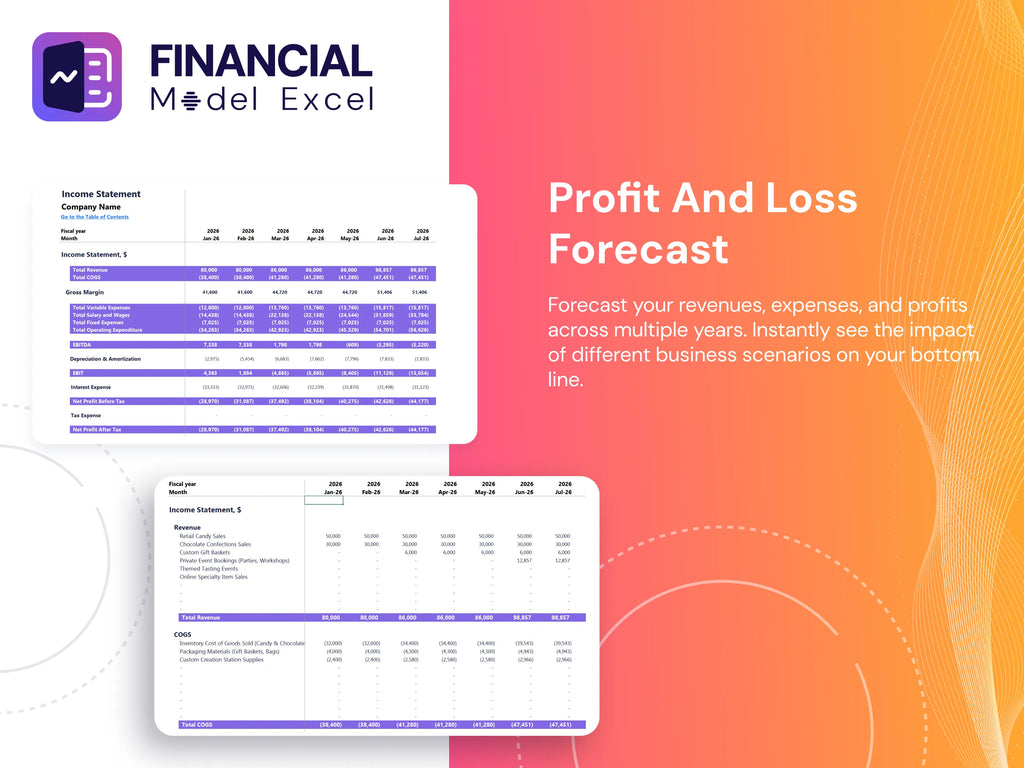
Pro Forma Balance Sheet Template Excel
The projected balance sheet is an essential component of any virtual reality education startup financial forecast, providing a comprehensive snapshot of the company’s financial health. It highlights the capital required to achieve the profits outlined in the profit and loss statement, forming a critical part of the vr learning platform revenue model. This document plays a vital role in financial modeling for immersive learning solutions, guiding budgeting for VR-based training programs and supporting strategic financial planning for VR learning platforms to ensure sustainable growth and profitability.
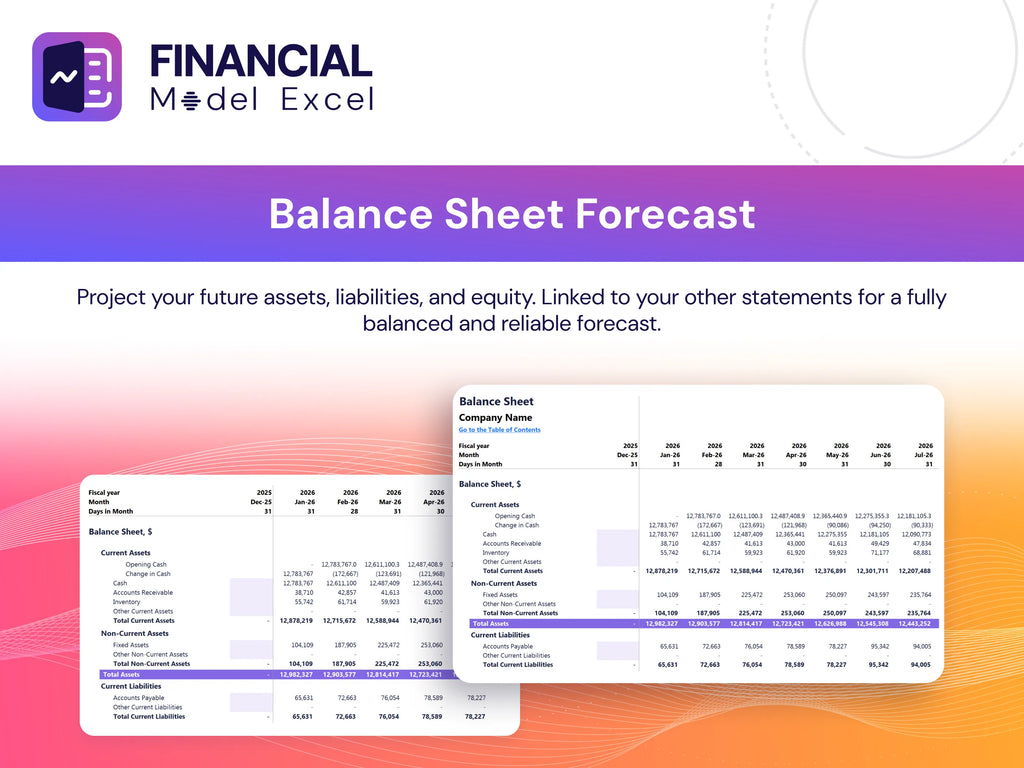
VIRTUAL REALITY BASED LEARNING PLATFORM FINANCIAL MODEL FINANCIAL PROJECTION TEMPLATE VALUATION
Startup Valuation Model
Our financial model for virtual reality education leverages two integrated valuation methodologies: discounted cash flow (DCF) and weighted average cost of capital (WACC). This approach delivers precise financial projections for virtual reality training platforms, enhancing the accuracy of budgeting and investment models. By combining robust financial planning with advanced cash flow modeling, it supports strategic decision-making and revenue optimization within VR learning solutions. This comprehensive financial analysis empowers startups and established VR education businesses to evaluate profitability, streamline cost structures, and maximize returns through effective monetization strategies.
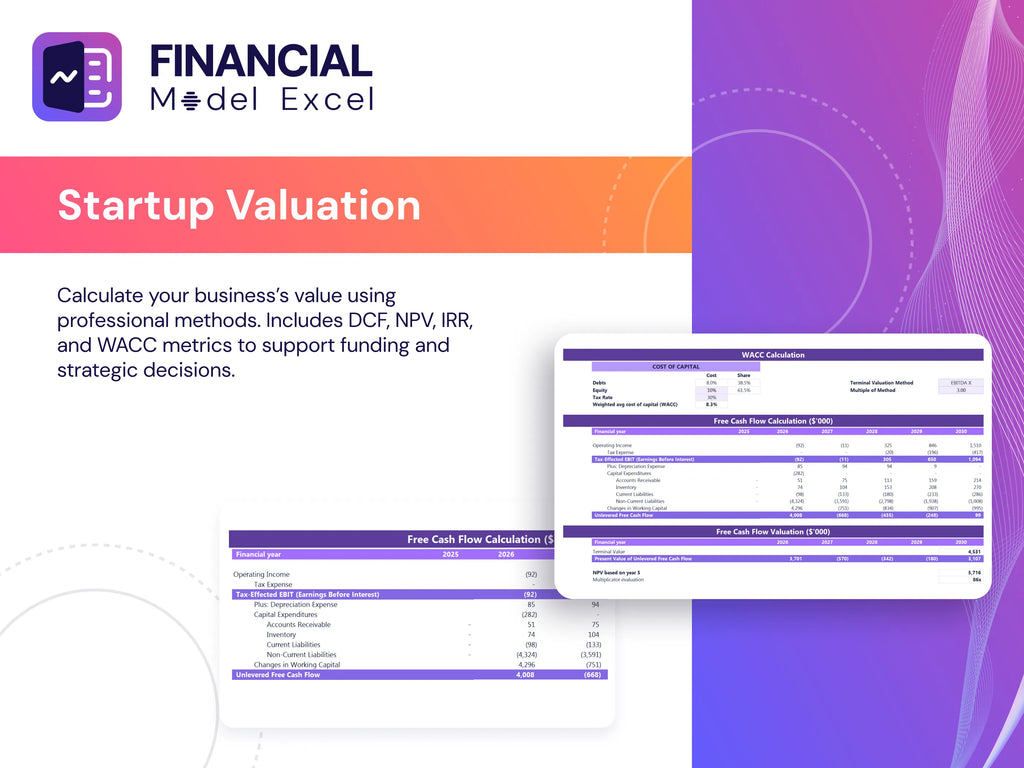
Cap Table
The Equity Cap Table within the 3-statement financial model offers a clear view of cash flow movements, detailing all financial instruments utilized in funding. It provides crucial insights into how strategic decisions impact profitability, enhancing the financial planning for VR learning solutions. This tool is essential for accurate financial projections for virtual reality training, supporting robust vr education business financial plans and investment models. By integrating this cap table, stakeholders can confidently assess the financial feasibility and revenue streams of VR-based educational platforms, driving informed budgeting and strategic growth in immersive learning solutions.
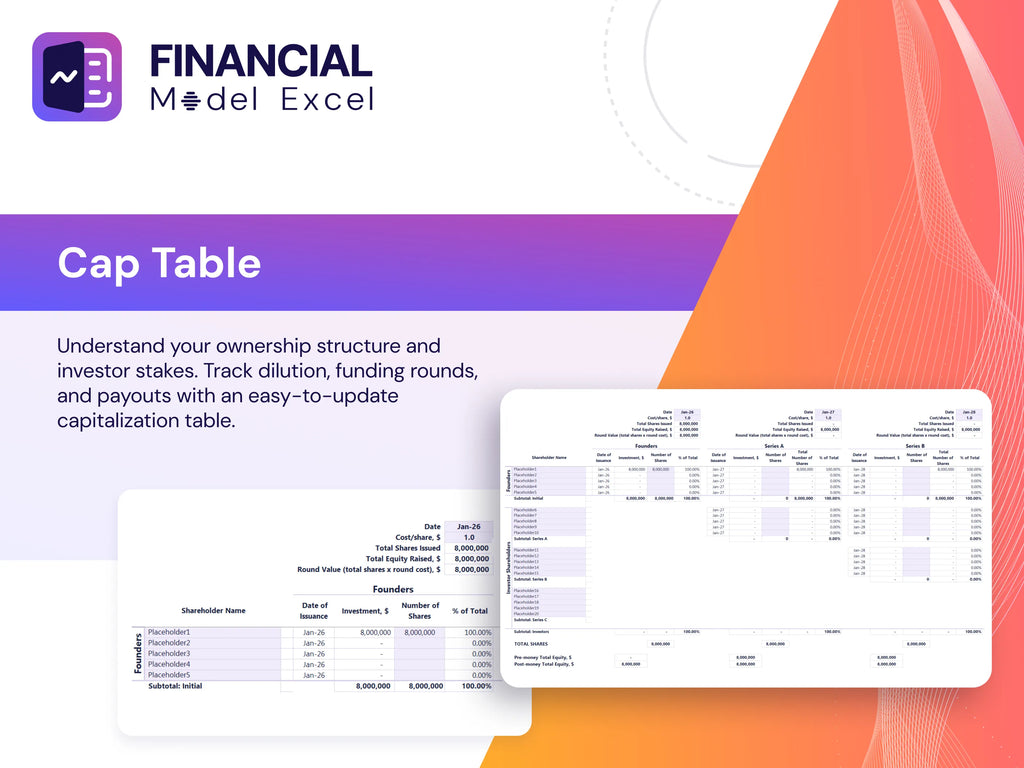
VIRTUAL REALITY BASED LEARNING PLATFORM FINANCIAL PLAN EXCEL ADVANTAGES
A robust financial model for VR education ensures precise profit forecasting, strengthening your brand’s market positioning and growth.
Show lenders your repayment strength with a 5-year virtual reality education financial model for confident funding approval.
Our virtual reality education financial model ensures precise budgeting, maximizing revenue streams and boosting sustainable profitability.
Establish clear milestones using a VR learning platform’s financial model to drive growth and maximize investment returns.
A robust financial model for VR learning platforms ensures clear insights, guiding profitable and scalable education investments.
VIRTUAL REALITY BASED LEARNING PLATFORM FINANCIAL PROJECTION EXCEL ADVANTAGES
Get a robust, fully expandable financial model optimizing revenue streams and profitability for VR education platforms.
This robust VR learning platform financial model enables precise forecasting and customizable planning for maximizing revenue and growth.
Optimize your VR learning platform profit model to identify cash flow gaps and surpluses before they occur.
Financial projections for virtual reality training enable proactive cash flow management, preventing deficits and maximizing growth opportunities.
The VR learning platform revenue model ensures scalable profits through diversified revenue streams and precise financial planning.
Streamline financial planning with our sophisticated yet user-friendly VR learning platform model, ensuring reliable forecasts and expert support.
Our integrated financial model ensures sustainable revenue growth and clear investor returns in virtual reality education platforms.
Our financial model ensures clear, investor-ready projections that maximize profitability and support strategic VR education growth.
Our financial model for virtual reality education ensures confident growth with clear revenue streams and sustainable profit.
Our financial model empowers precise planning, risk mitigation, and accurate five-year cash flow forecasting for VR education startups.





